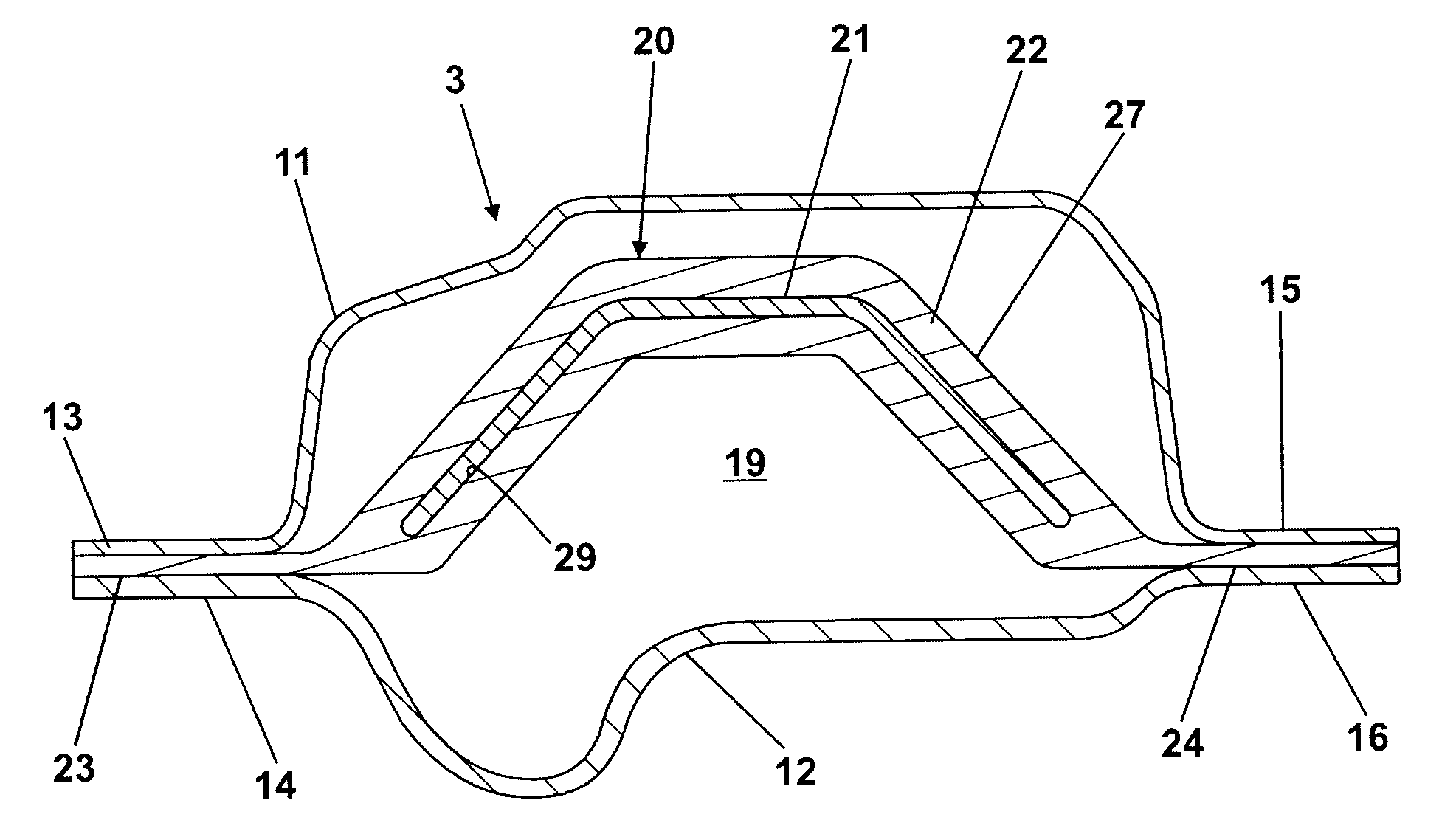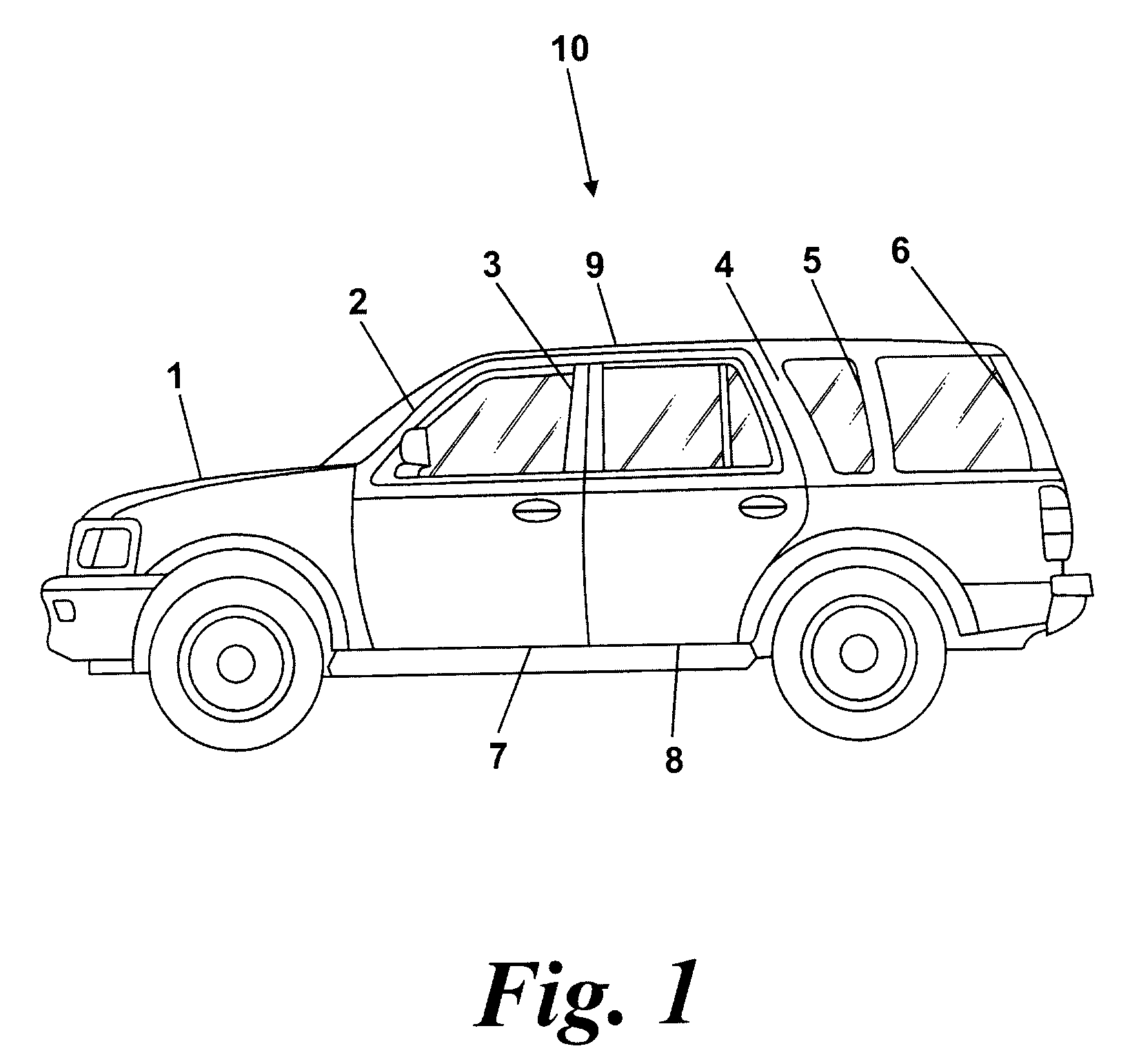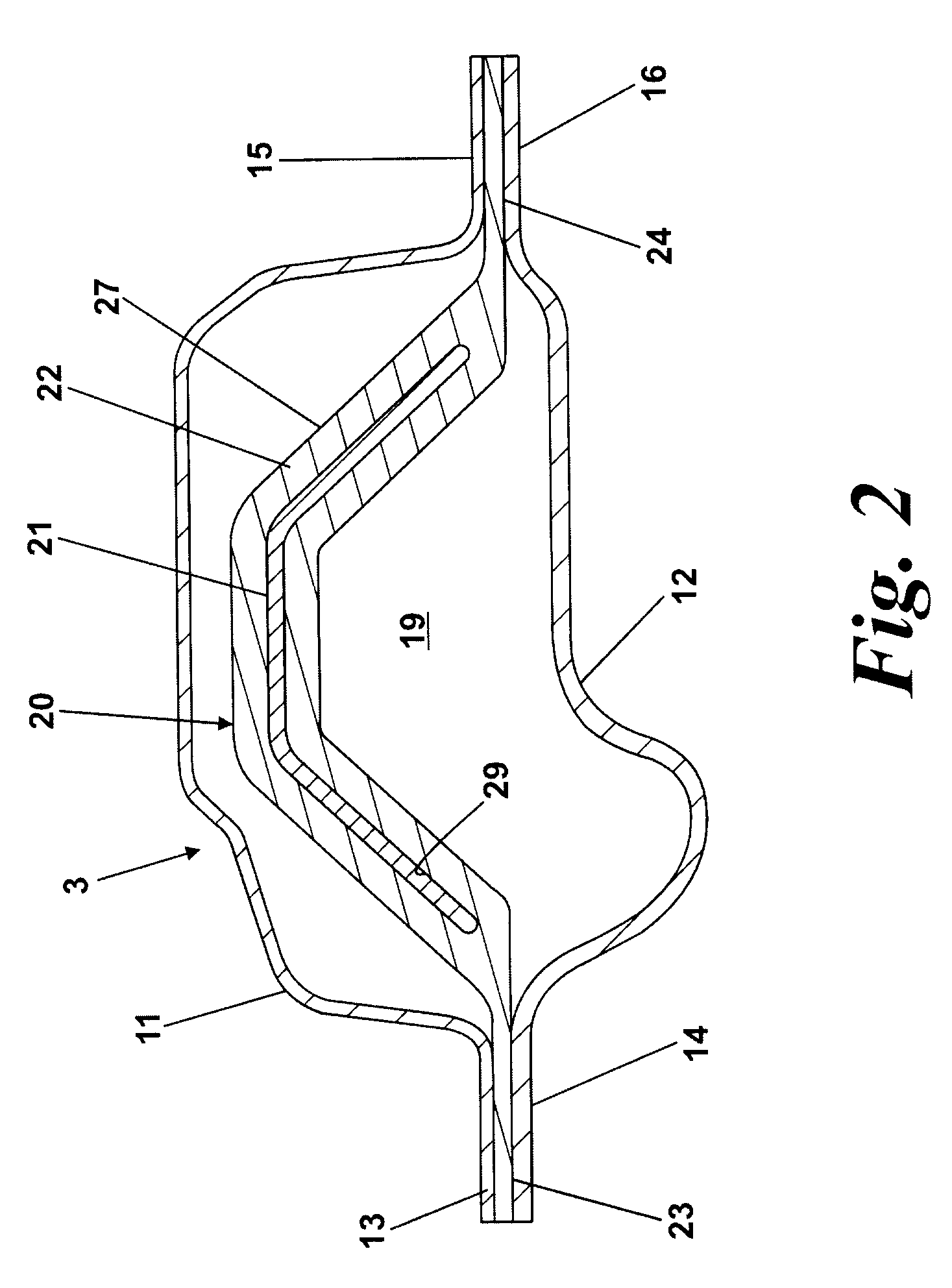Structural member for a motor vehicle
- Summary
- Abstract
- Description
- Claims
- Application Information
AI Technical Summary
Benefits of technology
Problems solved by technology
Method used
Image
Examples
Embodiment Construction
[0026]With reference to FIG. 1 there is shown a motor vehicle 10 having a body structure 1 comprised of a number of aluminum panels fastened to a number of underlying aluminum structural members (not visible on FIG. 1) and aluminum side structural members including an “A” post 2, a “B” post 3, a “C” post 4, a “D” post 5 and a “E” post 6, the side structural members being used to connect a roof 9 to a lower body structure. The vehicle 10 also includes a number of doors including a front door 7 and a rear door 8.
[0027]Referring further to FIG. 2, the “B” post 3 is formed from a first elongate panel member in the form of an aluminum pressing or stamping 11 and a second elongate panel member in the form of another aluminum pressing or stamping 12. The first pressing 11 has a first flange 13 extending along one edge and a second flange 15 extending along an opposite edge. Similarly the second pressing 12 has a first flange 14 extending along one edge and a second flange 16 extending alon...
PUM
| Property | Measurement | Unit |
|---|---|---|
| Yield strength | aaaaa | aaaaa |
| Thickness | aaaaa | aaaaa |
| Strength | aaaaa | aaaaa |
Abstract
Description
Claims
Application Information
 Login to View More
Login to View More - R&D
- Intellectual Property
- Life Sciences
- Materials
- Tech Scout
- Unparalleled Data Quality
- Higher Quality Content
- 60% Fewer Hallucinations
Browse by: Latest US Patents, China's latest patents, Technical Efficacy Thesaurus, Application Domain, Technology Topic, Popular Technical Reports.
© 2025 PatSnap. All rights reserved.Legal|Privacy policy|Modern Slavery Act Transparency Statement|Sitemap|About US| Contact US: help@patsnap.com



